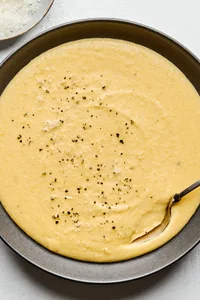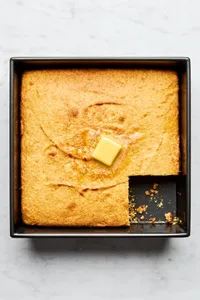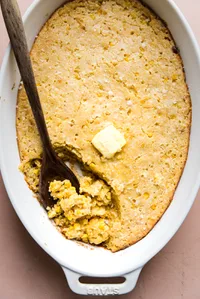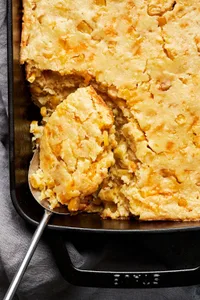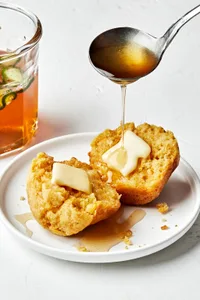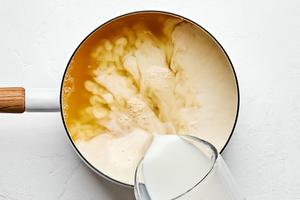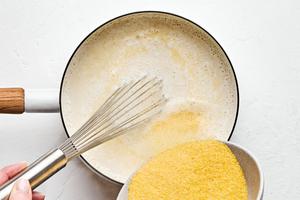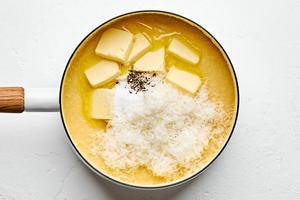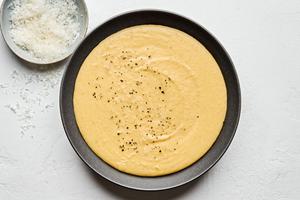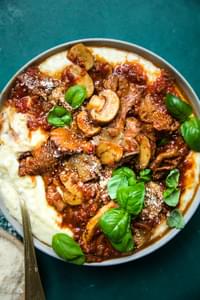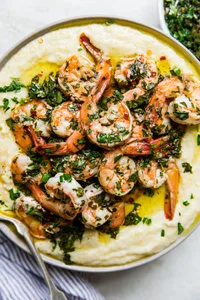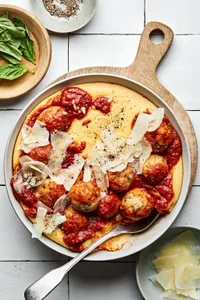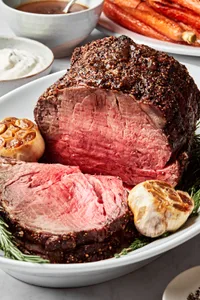Our creamy polenta recipe is simple and classic. Yellow cornmeal becomes porridge as it simmers in a creamy, savory combination of stock and milk, resulting in a comforting Italian polenta recipe that’ll brighten up any meal. Whether you top it with Instant Pot Chicken Marinara, Ratatouille, or simply a Poached Egg and a little more Parmesan cheese, it’s comfort food at its soothing, bone-warming best. Plus—despite numerous reports to the contrary—we promise that this polenta is easy to make.
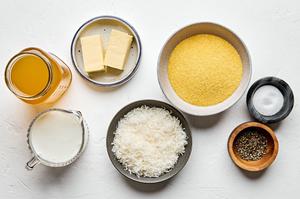
Ingredients For Our Easy Polenta Recipe
For the polenta:
Stone ground polenta or yellow cornmeal
Liquid: we like to use a combination of whole milk and stock either chicken or veggie.
To finish:
Unsalted butter - If you only have salted butter, you'll just want to add less salt when finishing.
Parmesan cheese - We prefer to use freshly grated! The kind you find already grated can sometimes have anti-caking ingredients in them, which can make a less silky smooth final result.
Salt & pepper - As much or as little as you'd like.
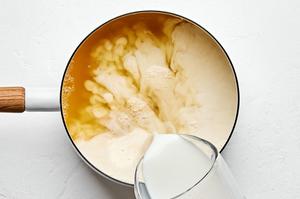
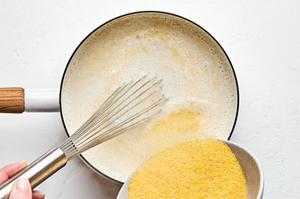
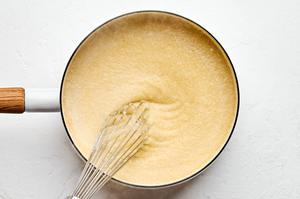
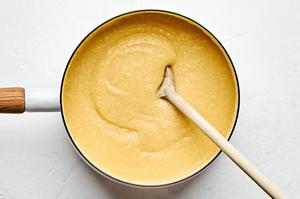
What Is Polenta?
Made of yellow cornmeal, polenta is a classic Italian porridge that you can enjoy in savory dishes or even topped with fruit and honey as a sweet breakfast. As long as the polenta you buy is processed in the appropriate facility, polenta is naturally gluten free. Polenta originated in Northern Italy, and food historians believe that the dish polenta actually predates the arrival of corn in Europe, and in fact dates back to antiquity, when it would have likely been made with native Italian grains, like coarsely ground chestnut flour or barley. Once maize was introduced in the 17th century, however, polenta became synonymous in Italy with a porridge made specifically from yellow cornmeal.
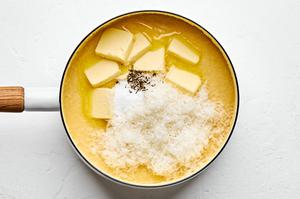
How To Make Polenta
Boil. Grab your favorite stock pot (affiliate link) and fill it with the whole milk and stock. Bring them to a strong simmer over medium heat.
Pour in the polenta, slowly. Marcella Hazan, the doyenne of classic Italian cooking herself, says “you should be able to see the individual grains spilling into the pot.” In other words, pour the cornmeal into the simmering milk-stock mixture very slowly, and whisk (affiliate link) it as you pour.
Keep whisking. Whisk the polenta consistently as it simmers to prevent lumps. As it thickens—after the first ten minutes or so—switch from a whisk to a regular wooden spoon (affiliate link).
Make it creamy. When the polenta begins to pull away from the pot, it’s done and ready for you to stir in some butter and Parmesan cheese. This is also your opportunity to season the polenta with salt and pepper to taste.
Serve the polenta right away. It will thicken as it sits, so it’s best to eat it right away. It makes a comforting side dish.
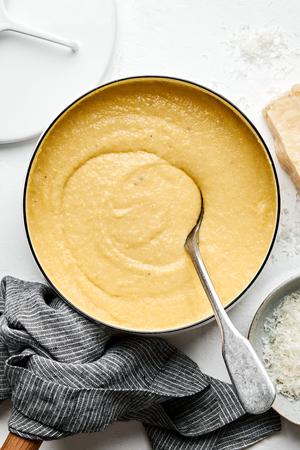
What To Eat With Polenta
You can serve polenta on its own as a simple, comforting side dish for most any meaty main dish, but it also makes a beautiful base for rich sauces and ragus. Think of it as you would rice or even pasta, and dress it up however you desire. We love to serve it topped with:
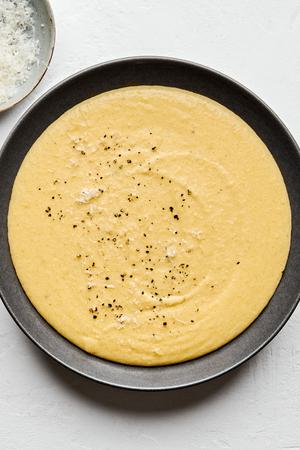
How To Store + Tips
Leftover polenta: Many people store leftover polenta by pouring it into a shallow pan, cooling it in the fridge and then slicing the ultra-firm, cooled polenta into squares. You can then pan-fry or even grill them to warm the polenta squares up, and you’ve basically got an entirely new side dish on night 2. We usually gobble it all up when it’s fresh, creamy and warm, though.
Our polenta ratio: With 1½ cups of milk and 3½ cups of broth to just one cup of polenta, our preferred polenta ratio is a whopping 5:1. One of the biggest polenta mistakes people make is not using enough liquid. Trust us on this one—5:1 is the polenta ratio that will give you the creamiest, best polenta.
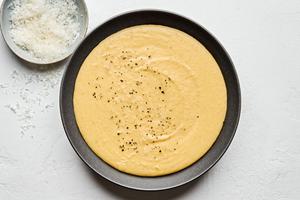
More Cornmeal Recipes To Try
We love cornmeal for its incredible versatility. From sweet to savory it covers all the bases.
It’s Corny How Much We Love Polenta
For more recipe inspiration, follow us on Facebook, Instagram, TikTok and Pinterest or order our cookbook. We love when you share your meals. Tag us on Instagram using #themodernproper. Happy cooking!
